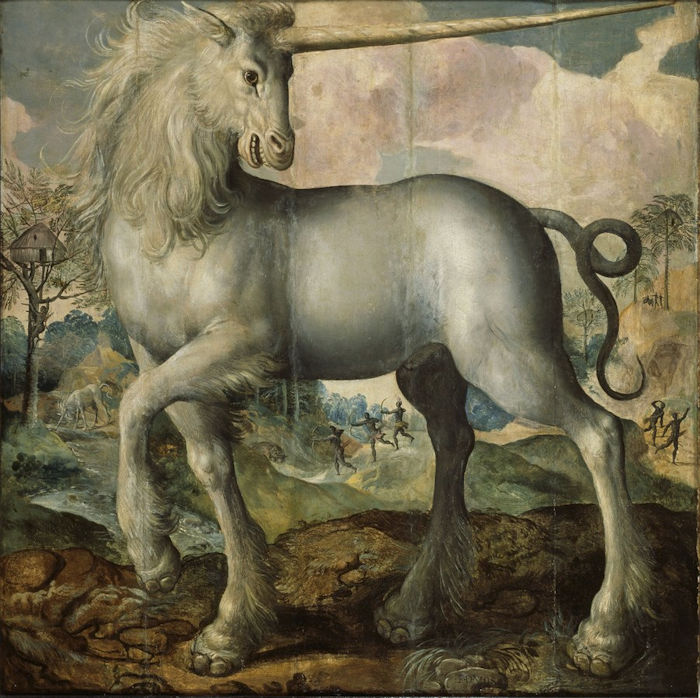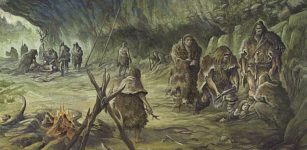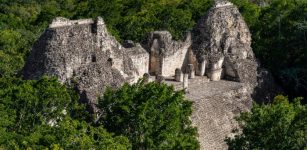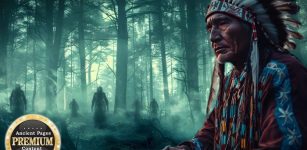Why Are There No Unicorn Fossils In A Museum?
Jan Bartek - AncientPages.com - The unicorn is a legendary animal often depicted on ancient seals and in Medieval manuscripts.
The beautiful and mysterious animal has fascinated people for ages, especially during the Middle Ages and Renaissance. Yet, many wonder why there are no unicorn fossils in a museum. Does this mean the legendary unicorn never existed? Why are unicorns part of some indigenous rock paintings if that is the case?
According to a recent study published in the Cambridge Archaeological Journal, Europeans traveled far, even to South Africa to catch unicorns, but they never succeeded.
A unicorn. Painting by Maerten de Vos (1532–1603). Credit: Public Domain
"During cross-cultural engagements, foreign beliefs in the mythical unicorn and a desire for evidence of its natural history intermixed to an extraordinary degree with local beliefs in a one-horned animal. For over two centuries, colonists and researchers alike failed to realize that the local creature, by chance, resembled the European unicorn.
A new synthesis of southern African ethnography, history and the writings of early travellers, missionaries and colonial politicians provides unambiguous evidence that one-horned creatures obtained in local beliefs before the arrival of colonists.
Moreover, it shows that these creatures are depicted in South African rock art, and that they are a manifestation of San (Bushman) rain-animals. By ignoring relevant beliefs and images, previous scholars have failed to acknowledge that the South African unicorn was, apart from its four legs and single horn, a creature wholly different from the European one," the researchers write in their study.
When the British came to South Africa, they wore uniforms with symbols of animals, such as the lion and the unicorn. Locals were surprised to learn the British were familiar with the unicorn. Locals and British exchanged information, but sightings of unicorns were hardly reported.
A description of a unicorn "was given by Hendrik Cloete of Groot Constantia fame, who wrote a letter in 1791 to Hendrik Swellengrebel Jr, son of the Cape Colony governor of the same name. Cloete mentions that a hunting party comprising Cape Khoekhoen and European farmers saw an unusual animal:
It had the appearance of a horse; was greyish in colour, and had small white stripes behind the jaw. Sticking out in front of its head was a horn as long as an arm and as thick as an arm at the base. In the middle the horn was flattish but the point was very sharp. It was not fixed to the bones of the forehead but was only attached to the hide of the animal. Several burghers [European farmers] and Hottentots say they have seen this animal in Bushmen-drawings on hundreds of rocks and stones", the study explains.
According to another recorded sighting people witnessed an animal "whose horn was in the middle of its forehead, and pointed forwards. The spoor of the animal was, they said, like that of a zebra. The horn was in shape like a gemsbok's, but shorter."
"These accounts collectively describe a horse-like animal having one horn pointing forwards, with or without stripes on part of the body, and known to colonists and indigenous communities alike. A key difference between European and San images of unicorns is that, in the latter case, the horns typically point backwards/upwards like the horns of African antelope. From an indigenous perspective, however, such a difference was probably trivial.
Indeed, some colonial rock paintings of one-horned animals have a single horn curving forwards or pointing upwards suggesting that European unicorn images (perhaps on British badges or in coats of arms) influenced how rocck painters at the time thought about the position of the horn. If that happened, we have a remarkable case of Western and San imagery interacting," the scientists explain.
When collecting and retranslating recorded oral traditions of unicorns, a central theme began to emerge. It seems the unicorn could have been a different animal. Were locals referring to the one-horned antelope or the rhinoceros calling them unicorns, perhaps?
One-horned antelope shown from various perspectives at a site southeast of Molteno. The necks of the two animals in the top left corner are turned, confirming that each head has one horn only. Note the yellow and white serpent. Credit: Cambridge Archaeological Journal (2023). DOI: 10.1017/S0959774323000045
"The story of the South African unicorn is a remarkable example of the extent to which at least some parts of distinct colliding cultural worlds may intersect during cross-cultural interactions. While colonial collisions were typically and in most respects catastrophic, the strong, superficial resemblance of one-horned rain-animals to European unicorns resulted in a complicated conflation of ideas. In this regard, is notable that the search for the unicorn in South Africa is an early precursor of the colonial science that later emerged in the Cape Colony in the mid nineteenth century while unicorns and the indigenous inhabitants of southern Africa could be accommodated in European natural history, local customs and beliefs had no such place.
Although the conflation of unicorns with San rain-animals may initially seem to be a unique example, it raises the possibility that colonial cross-cultural engagements around the world resulted in still other instances of seamless melds between culturally distinct concepts. Crucially, however, such melds would, almost by definition, be virtually invisible from our position in the present. Acknowledgement of their existence requires, almost necessarily, a new historical analysis, and interrogation, of our conventional views," the study concludes.
It is also possible, as previously discussed on AncientPages.com that unicorn was an Oryx and and ancient translation mistake.
Written by Jan Bartek - AncientPages.com Staff Writer
Expand for referencesMore information: David M. Witelson, Revisiting the South African Unicorn: Rock Art, Natural History and Colonial Misunderstandings of Indigenous Realities, Cambridge Archaeological Journal (2023). DOI: 10.1017/S0959774323000045






















